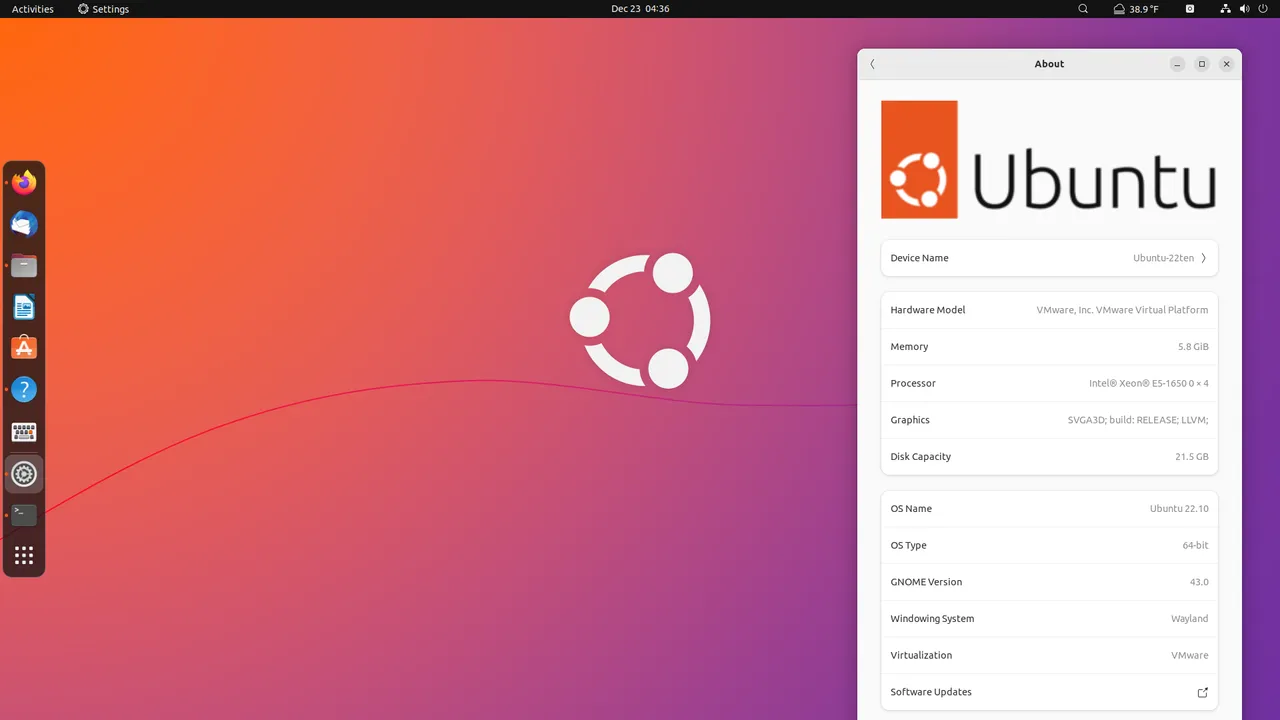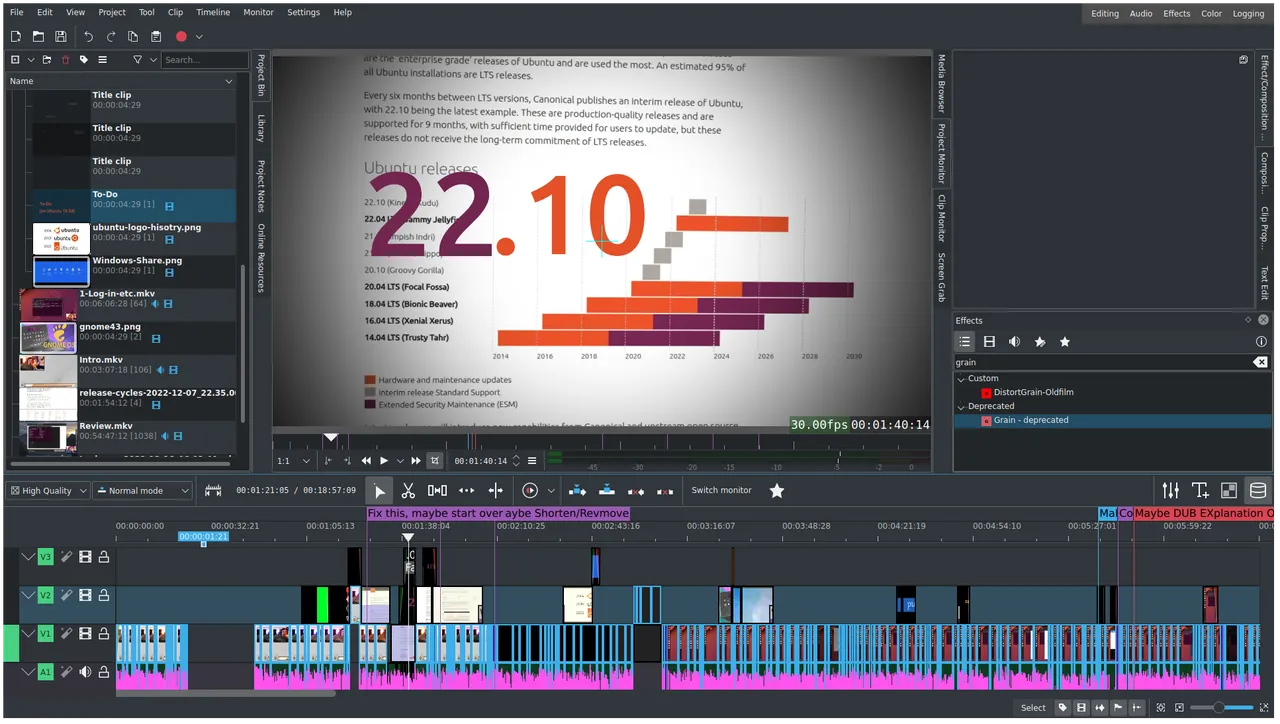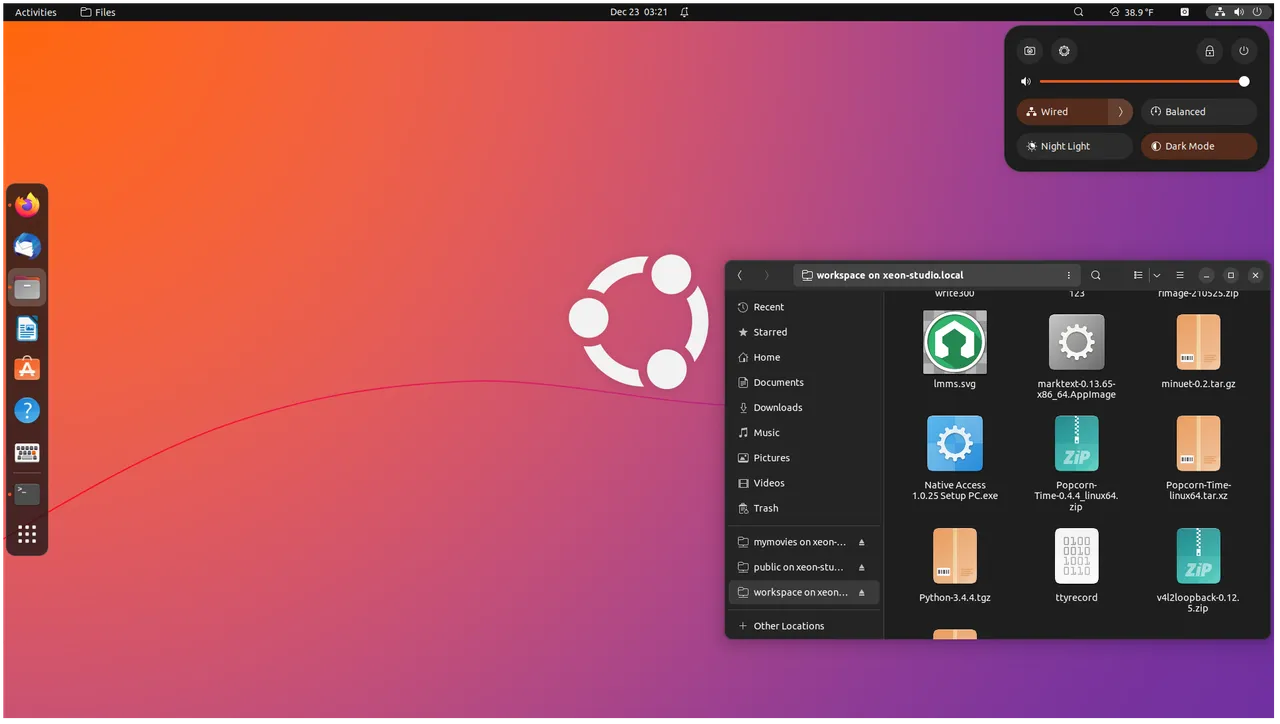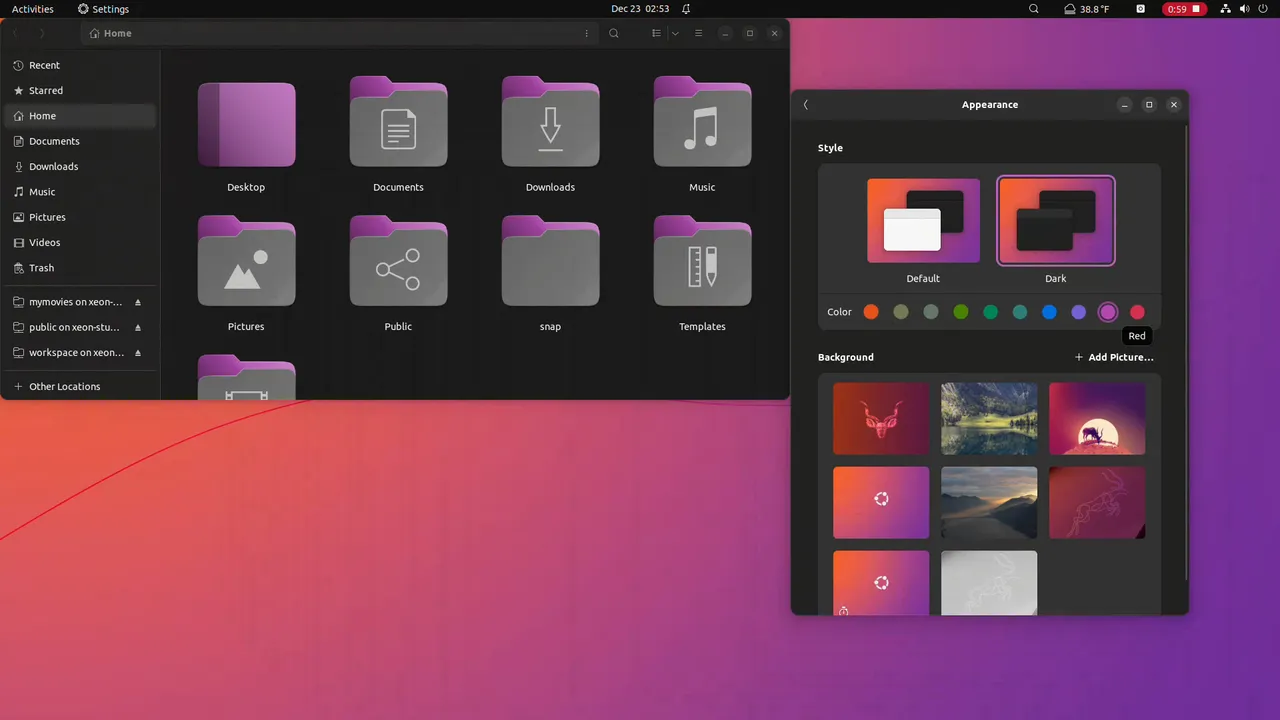
My Qualifications As a Ubuntu "Aficionado"
As I write this I'm in the middle of doing a video about Ubuntu 22.10.
I've finished recording my assessment/test of it, and I'm currently editing. But I plan to do an "extra" segment for the video where I'll fix some of it's shortcomings, and test out all of the awesome Gnome Extensions that I haven't been able to use on my daily-driver Linux distro which is still Ubuntu 18.04. I started createding DS-Tech Media's videos on Arch Linux, but for the past three years I've done virtually all my creative work on 18.04.

But I've been using Ubuntu long before that.
Ubuntu 14.04 was my very first real experience using Linux. I say real because prior to that I had played with Linux Mint KDE in a virtual-machine on Windows, and installed Ubuntu 14.04 on a machine I planned to use as a home server.
Unity-7 on Ubuntu was just so good looking & interesting, and that's what got me to start using Linux as my PC operating system.
Since then I've used Ubuntu(and it's derivatives like Elementary OS) more than any other Linux distro. Even when I was using Arch, Ubuntu is what I've always used for all of my servers and VM's.
Thoughts On Ubuntu, Canonical, and Snaps
When I started using Ubuntu, Canonical(the company that basically drives Ubuntu development/direction) was full-steam-ahead focused on Ubuntu Touch for smartphones.
It was during this time that they developed a technology, then called Snappy, that would solve their need for a sandboxed package that could be safely run on Ubuntu Touch, and would also include all of it's dependencies in a uniform way.
One of the plights of Linux has been the sprawl of dependencies. A dependency is a library or utility that is needed by another application or even another dependency. In Linux it's commonplace for multiple applications to require and use the same dependency, but as that dependency changes the compatibility sometimes breaks. What we end up with is multiple versions of these dependencies or broken/uninstallable applications because of dependencies.
Before Canonical/Ubuntu cancelled Ubuntu-Touch they would bring this technology to PC's as Snap packages, also often called Snapcraft. It would address the dependency issues for Linux in general, and also would provide a way for developers to release their software for any Linux distro that had Snapcraft installed.
This specifically helps developers not only because of the dependency sprawl, but because of the many nuances incurred by the many Linux desktop environments, visual toolkits, and API's that vary between the many Linux distributions.
Generally there would be maintainers for each distro that would work to update & fix the app/package for their particular distro. This is fine for entirely open-source 3rd party software, but it's not always possible with proprietary software released by companies, organizations, or developers that inevitably end up picking a particular Linux distro to target their releases on. One example that immediately comes to mind is Steam which began as an application with a runtime that was built against Ubuntu. While using Arch I noticed that I could install Steam built on the Ubuntu runtime, but there was also a version built against Arch that was in the Arch User Repository(AUR).
Today the official Steam runtime is the one built against Arch.
Canonical launched Snapcraft as an alternative to Flatpaks which was also trying to address the same issues, but Snaps were also presented as a tool for companies that could be used in the embedded or server markets.
There was already a sort of disdain for Ubuntu & Canonical in the wider Linux community for various reasons such as when Ubuntu shipped the Amazon suggestions feature in their Unity desktop environment. This was presumed to have been done for financial compensation by Amazon, and was seen as a data collection point as well as a security vulnerability.
Snap packages would also draw a lot of criticism for various reasons, such as:
- The Snap Store:
The central hub/repository for Snap packages was proprietary. Proprietary & closed-source software is very much a "no-no" in the Linux world, but is often accepted for certain things like Nvidia's drivers. - Performance:
Snap packages were criticized for starting slowly, and suffering other hiccups due to their sandboxed security design which would prevent certain functionality from working without modification or compromises.
My personal experiences with Snaps were mostly pleasant.
For desktop Snaps seemed to bring software from 3rd parties who would normally not invest the time in porting software to Linux.
I eventually tried Ubuntu-Core & Nextcloud as Snaps for my RaspberryPi-2b+. Ubuntu Core is an entire Ubuntu OS designed specifically for server & embedded use, packaged as a Snap.
It was the fastest & easiest way I know of to have Ubuntu with Nextcloud up and running in just a few minutes on the Raspberry Pi, but it had drawbacks when trying to add extensions or change configuration files.
If it seems like I'm rambling on and on I'm sorry. I'm trying to preface all of this for context in my main point.
Ubuntu 22.10
The Good:
At the system level we get a fairly new Linux kernel:
5.19.0-26-generic #27-Ubuntu SMP PREEMPT_DYNAMIC
So it's the generic Ubuntu SMP kernel, SMP meaning Symmetric Multi-Processing where each core of the CPU operates equally & cooperatively.
This is typical of the generic Ubuntu kernel.
But, PREEMPT means preemptive where the scheduler can interrupt the CPU with a higher priority task. I've used the PREEMPT-RT or a "hard real time" kernel in the past for the lowest latency performance for music production work, but I hadn't seen the Dynamic before so I had to look it up.
Phoronix.com says:
The CONFIG_PREEMPT_DYNAMIC option when enabled allows setting preempt= at boot time to either none/voluntary/full with full preemption being the default.
Distributions can still set the standard PREEMPT controls but this dynamic option allows changing it at boot time without rebuilding the kernel or even at run-time via a DebugFS interface.
The kernel relies on runtime patching for changing the kernel preemption mode on the fly.
So essentially a kernel with more dynamic preemption flags that can be turned up based on your needs.
Wayland Is Default(...Yay)
22.10 defaults to Wayland when logging in. Wayland is the new modern display server designed to replace the aging X.Org server. But if you're like me and need the old Xorg server don't worry, Xorg is included as well.
Pipewire Is Default, Yay!
Since before I started using Linux it's always came with Pulseaudio as a sound server, but if you wanted lower-latency performance for recording & producing music you'd need to install JACK.
Pipewire is the new system that replaces both of them transparently. Meaning software that used ALSA, Pulseaudio, or JACK wouldn't even know that Pipewire was doing the work instead. This was my second time using Pipewire, the first being with Pop!_OS. It worked with zero configuration, and zero problems.
Gnome 43
The other big news for Ubuntu 22.10 is it comes with Gnome 43.
Gnome 43 features a fresh look thanks to GTK4+ visual design toolkit.
As usual, they include a bunch of Ubuntu-themed wallpapers.
The new quick-settings drop-down menu is also improved with toggle controls for power management, Bluetooth & Wifi options, and other controls including switching audio devices. There's also the Nightlight toggle for reducing blue light eye strain, and a universal dark theme toggle.

Ubuntu also custom modifies Gnome with a few extensions that style the desktop to Ubuntu's layout that's somewhat visually similar to the Unity days.
Ubuntu uses their own icon theme which is now Yaru which actually debuted back with the Unity 8 preview. It used to be far better than Gnome's Adwaita icons, but those have improved a lot too. I still think I prefer Ubuntu's Yaru to Gnome's Adwaita.
Ubuntu also adds the option to change the accent color to about a half-dozen choices. This accent color applies to all of the toggles, slider bars, and even the folder icons in the file manager.

Speaking of file manager, Nautilus now has rubber band select in list view, and improved search features.
The long-time text-editor, Gedit, is now replaced by the aptly titled application called: Text-Editor, yeah.
The overview animation that shows you all your open windows and the app list also reportedly renders a whopping %15 faster.
Firefox, which is shipped as Snap package, allegedly also opens much faster now, and they have added native messaging support so that things like password-managers and Gnome-Extension Integrations should now work.
It also ships with the latest Thunderbird mail client, which isn't a Snap, and the latest version of Libre Office.
Besides that, the apps are largely the same.
The Bad:
First off, They decided to get rid of the To-Do app.
I disagree with dropping this app.
Was it majorly important? No, but it was another app that could make use of Gnome's online accounts integrations. It was a simple app that let you make to-do lists that you could then view & mark completed on your phone. It was useful and had practical Google integration.
I currently use To-Do on Ubuntu 18.04 to sync my shopping lists, reminders, and other tasks to my Android phone.
Firefox is still a Snap, but they claimed it had been improved with faster start-up times, and fixed the lack of native messaging support that stopped various integrations from working.
In my Firefox testing the first ever startup took a whopping 19 seconds, but subsequent opens were around 4 or 5 seconds.
My first move was to install the extensions integration for Firefox, and go to extensions.gnome.org to test out installing Gnome extensions which did not work out of the box. However, this wasn't because of Snap confinements, but needing to explicitly install the Gnome Shell Extensions package. This makes very little sense to me as Ubuntu's desktop itself relies on the Appindicators, Ubuntu-Dock, and Desktop Icons NG extensions. Upon opening the Extensions app the Built-In category actually shows about a dozen extensions, but the rest of them might come with the app itself.

So Ubuntu basically hides Gnome's extension capabilities from new users which is one of Gnome's greatest strengths.
Somehow I ended up clicking the Help app, which is also the Ubuntu Guide. In there I found a link to download the Gnome Extensions package, and the Ubuntu Software Center labeled it potentially dangerous/harmful, despite it being linked to from the official documentation. After installing it, I could install Gnome Extensions directly from inside Firefox.
It's been a long time since I first used Ubuntu 18.04 so I can't recall for sure, but I believe Firefox came with the extension in working order, and available upon first boot-up.
Unsurprisingly, Flatpak support is also not included,
But what IS surprising is that AppImages don't work, and this was due to a missing library for File-Systems In User-Space: libfuse2. I feel like this was included in earlier versions, but it's been a long time so once again I could be wrong.
My real frustrations come with the Ubuntu Software Center itself. It still has the same name, and even the same icon, but the package itself is now called Snap Store. This new Snap version of Ubuntu-Software means that you can't add Flathub to the sources which allowed you to download Snaps, Flatpaks, and native .Deb images prior to Ubuntu 22.10.
I knew this going into 22.10, but I wasn't prepared for the next surprise.
I browsed the Music & Video category for LMMS the audio workstation I prefer for making beats & songs, but it didn't show up in the list. However it did show up when I actually typed LMMS into the search bar.
At first I thought this was a bug, but then I had a realization.
The new Software Center doesn't display apps that ONLY come as a .deb file UNLESS you search for them by name. The apps that are shown in the various categories do allow you to choose which Snap version you want, and also list the .deb versions.
But if there isn't a Snap version it's not displayed if you're just browsing. This means there are literally thousands of applications that a new user won't be exposed to, and that's a major disservice to new users.
The Conclusion:
Ubuntu & Canonical appear to be going all in on Snap packages. I don't dislike Snaps, but if I can use a native .deb version I prefer that. Also AppImages are better than Flatpaks or Snaps in my opinion, and those won't work without installing an extra package.
I realize that it's been a long time since I first started using Ubuntu, and I probably had to fumble my way through learning about some of these things. But the Ubuntu Software Center hiding thousands of native applications from new users is just not the direction to go.
I wouldn't recommend Ubuntu to a new user when there's options out there like Linux Mint, Pop!_OS, and even Ubuntu Mate.
I started out producing music, graphics, and video using Arch Linux. I was in the middle of a project when I had hardware failure that forced me to move to a new machine. Because I needed to get back up and running with lots of applications I went with Ubuntu 18.04 since it was sort of my go-to Linux distro.
But as an advanced Linux user, I don't think I'd pick the new Ubuntu as my workstation OS either.
Canonical & Ubuntu are continuing to embrace Snap packages while their critics and even fans like myself are not looking forward to this new Snapified product.
Anyways, that's what I think of Ubuntu 22.10.
Still working on the video, and like I said it'll be enhanced with me showing off all of the cool Gnome Extensions you can add to Ubuntu, and I do praise some of the things that are new along with apps I've always loved like Rhythmbox & Shotwell.